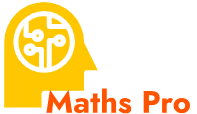Model Theory Assignment Help: Studying Structures and Interpretations
Model Theory assignment help required? Model theory is an area of mathematical logic concerned with the logical connection between formal languages and their interpretations, such as models. Whether it’s the concept of structures, theory, or completeness in general, by the end of this guide, one will have a comprehensive understanding of model theory and a practical approach to solving discipline-specific assignments.
What exactly is model theory?
Model theory is the branch of mathematical logic that investigates the connection between formal languages—logical systems—and their models, i.e., interpretations. It is the study of structures that make a given set of sentences true in a formal language. More simply put, model theory is the study of how mathematical structures can represent abstract concepts and how different models can satisfy the same logical theory.
Key Concepts in Model Theory
To successfully complete your model theory assignment, it’s essential to understand the key concepts involved:
- Structures: A structure in model theory consists of a domain (a set of elements) along with functions, relations, and constants that interpret the symbols of a language. For example, the structure of the natural numbers can be defined by the domain of numbers and the operations of addition and multiplication.
- Sentences and theories. A sentence is a statement in a formal language that is true or false. A given model considers a set of sentences as true. Understanding how sentences and theories interact is a central part of model theory.
- Satisfiability: A model satisfies a set of sentences if all the sentences in the set are true in that model. Your assignment may require you to ascertain whether a model aligns with a specific theory.
- Logical Equivalence: Two theories are logically equivalent if they have the same models—that is, they describe the same mathematical structure in different ways.
- Completeness and Compactness: The Completeness Theorem says that every consistent theory has a model. The Compactness Theorem says that if every finite subset of a theory has a model, then so does the whole theory.
- Elementary Embeddings: These are mappings between models that preserve the truth of sentences. Understanding how elementary embeddings work is an important part of more advanced model theory problems.
How to Get Model Theory Assignment Help
Approach any model theory assignment in an organized and clean manner by doing the following:
- Understanding the Problem: Study the assignment’s language, sentences, and structure to identify the main elements. Ensure you comprehend the question, whether it pertains to satisfiability, equivalence, or the presence of models.
- Define the Model: First, define the model or structure in question. State clearly the domain, relations, functions, and constants that give an interpretation of the language. This will enable you to chart out how to proceed with the problem.
- Model Theory employs formal logical systems as its foundation. If your assignment requires the use of logical equivalence, completeness, or compactness, make sure you understand the logical tools and theorems relevant to those concepts.
- Exploit significant theorems from model theory, such as the completeness theorem or the compactness theorem, to help guide the analysis. So often, these theorems turn out to be pivotal in cracking the problem.
- The process of checking for satisfiability involves determining whether a model satisfies a theory or a set of sentences under investigation. The process involves verifying if every sentence within a structure is true.
- Work through Examples: Work out simple examples to solidify your understanding of the concepts of Model Theory. Start with simple structures and gradually move to more complicated theories.
Common Model Theory Problems: How to Solve Them
Here are some common problems in model theory assignments that students may encounter:
- Satisfiability Problems: An inquiry may arise as to whether a model satisfies a set of logical sentences. This will usually involve checking whether all the conditions of the structure hold for the given sentences.
- Theorem Proving: There are proofs where the goal is to establish whether a set of sentences follows a model or is consistent. This, more often than not, involves some application of either the Completeness Theorem or the Compactness Theorem. However, it is crucial to meticulously follow each step of a logical rule accurately.
- Logical Equivalence Someone may ask you to decide whether two theories are logically equivalent.
- Elementary Embeddings. Demonstrating the embeddability of one structure in another while maintaining truth may be necessary to solve certain problems. We achieve this by mapping structures and demonstrating the preservation of the sentences under the embedding.
Model Theory Assignment Help: Tips and Resources
These tips will help you dominate model theory assignments:
- Be familiar with the logical tools. Model theory largely depends on logic, so you should be at ease with things like logical equivalence, satisfiability, and theorems like the Completeness Theorem and Compactness Theorem.
- Work through Examples: To understand model theory better, work through simple examples and build your way up to more complex problems. Use textbooks and online resources for additional practice.
- Seek Help When Needed: Don’t be afraid to seek help with the aspects of model theory that you find difficult. You can get model theory assignment help from tutors or online resources that give your insight and step-by-step explanations.
- Use online resources: There are detailed articles with examples of the concepts of model theory on websites like the Stanford Encyclopedia of Philosophy or the Internet Encyclopedia of Philosophy. One can also find visual explanations in YouTube tutorials or academic lecture series.
Model Theory Assignment Help: Get Expert Assistance
If you find the assignment of Model Theory not going well, don’t be ashamed to seek the help of a professional to find your clarity. Tutors will make complex problems simple, revealing key concepts and areas for general improvement within model theory. Receive online, one-on-one sessions to ensure you fully understand the provided material.
Conclusion: Master Model Theory Assignments with Confidence
Model Theory is that part of Mathematical Logic that requires deep knowledge of formal languages, structures, and theorems. Students can easily learn the important concepts of satisfiability, logical equivalence, and the completeness theorem, enabling them to confidently tackle their Model Theory homework. you will surely excel in this area of model theory with constant practice and the right resources; this will further develop your logical reasoning skills.
Need help with the model theory assignment? If you still find it hard, you’ll be able to get instant professional help with a Model Theory assignment. Both tutors and academic services are ready to help with difficult problems, guiding you deeper into the subject.

